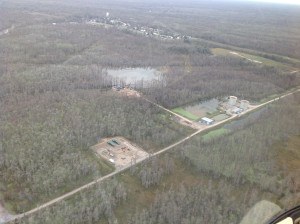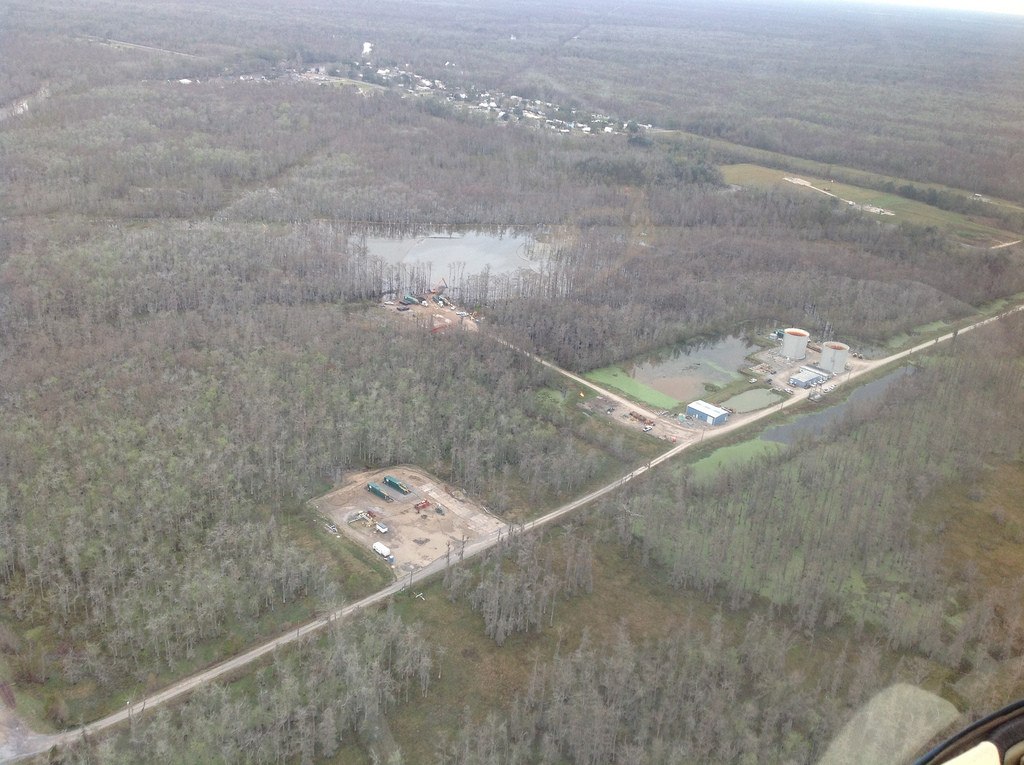At least 12 salt-dome caverns in Louisiana are as close to the edge of their supporting underground formations as the one that collapsed last year and caused a huge sinkhole in Assumption Parish.
Data given to The Advocate by the state shows those 12 caverns, along with 15 others, would violate proposed rules mandating a buffer zone to ensure caverns are structurally sound.

The Texas Brine cavern collapse – which forced the ongoing evacuation of many homes near the sinkhole because of flammable gas bubbling up through aquifers – prompted the Department of Natural Resources’ Office of Conservation to rewrite rules.
Environmentalists, some Bayou Corne residents and others fighting a proposed gas storage cavern expansion at the Jefferson Island Dome under Lake Peigneur in Iberia Parish plan to speak at a public hearing Tuesday on the proposed regulations.
The Texas Brine Co. cavern that caused the sinkhole was mined too close to the outer edge of a salt formation called the Napoleonville Dome, which left a relatively thin wall of salt between the cavity and less stable outer rock. The wall failed, creating the sinkhole and freeing oil and natural gas from underground deposits.
Marylee Orr of the Louisiana Environmental Action Network said she’s concerned about the number of caverns with thin walls.
“I think we need to be cautious because if there is a problem, it is not a small problem. You know what I mean?” Orr said.
State officials say there’s no indication of problems like those that caused the Assumption failure.
“To date no other cavern facility has been found to demonstrate the type of warning signs that would indicate impending structural failure of the nature experienced by Texas Brine’s Oxy Geismar 3,” said Patrick Courreges, communications director for DNR.
Courreges said that while there have been no signs of problems with other caverns, the Office of Conservation is playing it safe because of the possible risk.
The proposals include a new 300-foot minimum safety distance from what is called the “edge of salt,” along with new requirements for long-term monitoring of some caverns.
After the Texas Brine collapse, the state required salt-dome operators to show how close the 256 caverns in Louisiana are to the edge of the salt formations that house them.
In all, 27 caverns are closer than the proposed 300-foot minimum distance for future caverns.
Under the proposed regulations, the six that are 100 feet or closer to the salt’s edge would be permanently closed, with long-term monitoring established. Five of the six are already inactive or plugged.
Operators of the remaining 21 caverns between 100 feet and 300 feet from the edge would have a year to demonstrate they can continue to operate safely. Many of those are no longer active.
Was this article valuable?
Here are more articles you may enjoy.


 California Chiropractor Sentenced to 54 Years for $150M Workers’ Comp Scheme
California Chiropractor Sentenced to 54 Years for $150M Workers’ Comp Scheme  Harvard Study Again Stirs the Pot on Demotech Ratings of Florida Carriers
Harvard Study Again Stirs the Pot on Demotech Ratings of Florida Carriers  EVs Head for Junkyard as Mechanic Shortage Inflates Repair Costs
EVs Head for Junkyard as Mechanic Shortage Inflates Repair Costs  Dog-Related Injury Claim Payouts Hit $1.12B in 2023, Report Shows
Dog-Related Injury Claim Payouts Hit $1.12B in 2023, Report Shows 